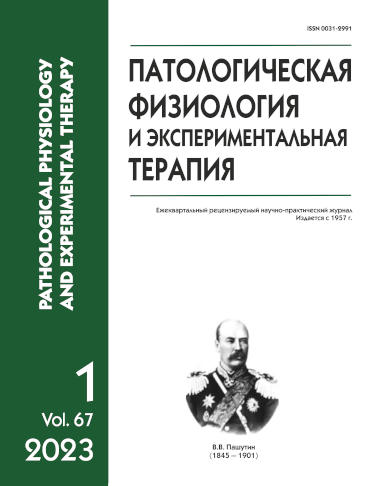Effect of hemotransfusions in newborns and infants on the composition and oxygen affinity of physiological hemoglobin
Abstract
In the clinical practice of transfusions, red blood cells containing adult-type hemoglobin (HbA, 98-100%) are transfused from adult donors to neonatal and infant recipients with dynamically changing levels of fetal blood hemoglobin (HbF, 70-90%). It is this age group that is distinguished by unique physiological features of the rapidly changing ratios of blood hemoglobins with the growth and maturation of the body. The situation of uncertainty remains with respect of clear scientific criteria for the variability of the composition of blood hemoglobins in neonatal patients, specifically, the ability of the dynamically changing hemoglobin structure of newborns to provide oxygen to tissues. Aim was to physiological hemoglobin. determine the effect of blood transfusions on changes in the composition and functions of he moglobins in neonatal patients and infants. Methods. The work was based on the analysis of clinical data from neonatology departments and intensive care units and systematized 923 studies of indicators of blood hemoglobin types, acid-base state. and blood gas composition in 256 patients. The dynamics of indicators of physiological hemoglobin and oxygen affinity were compared in newborns and infants before and after blood transfusion during treatment. Results. Comparing the values of HbF % in newborns, depending on the use of hemotransfusions showed that a decrease in fetal hemoglobin proportion of total blood hemoglobin was more pronounced in patients receiving blood transfusions. A more significant decrease in fetal hemoglobin during blood transfusions was observed in premature infants, up to 29.81% vs. 17.83% in the full-term group. The partial oxygen pressure in the blood of newborns, at which 50% saturation (P50 mmHg) is achieved was determined. This parameter is used to estimate the hemoglobin oxygen affinity. The study results indicate that a higher oxygen partial pressure (pO2) is required for 50% saturation of hemoglobin in the blood of newborns after hemotransfusion. Conclusion. In contrast to older age groups, the accumulation and release of oxygen in response to the tissue demands in children of the first year of life depend not only on the quantitative values of total blood hemoglobin, but also on its composition, the hemoglobin fraction ratio. A decrease in the proportion of fetal hemoglobin, both physiological and induced by blood transfusion, is accompanied by a decrease in the total hemoglobin oxygen affinity in children of the first year of life. This reduces the capability for targeted oxygen delivery to tissue areas with the most pronounced acidosis and hypoxia.






